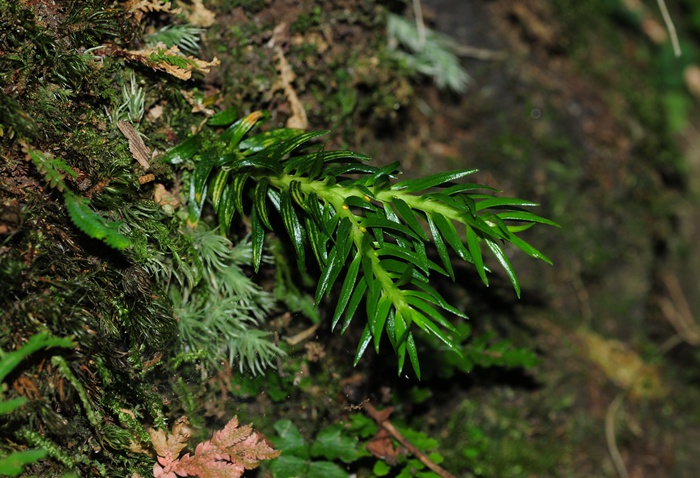- Scientific Name: Phlegmariurus cryptomerinus (Maxim.) Satou
- Ref: Hikobia 12(3):268. 1997
- Synonyms:
- Huperzia cryptomerina (Maxim.) R.D.Dixit
- H. formosana Holub
- H. integrifolia (Matsuda) B.Øllg. ex Satou
- H. taiwanensis (C.M.Kuo) C.M.Kuo
- Lycopodium cryptomerinum Maxim.
- L. taiwanense C.M.Kuo
- Phlegmariurus taiwanensis (C.M.Kuo) Li Bing Zhang
- Urostachys coreanus (Herter ex Nessel) Herter
- U. cryptomerinus (Maxim.) Herter ex Nessel
- U. cryptomerinus var. coreanus Herter ex Nessel
- Chinese Common Name: 柳杉叶马尾杉 liǔshān∙yè mǎwěi∙shān, 柳杉叶蔓石松 liǔshān∙yè màn∙shísōng
- Japanese Common Name: スギラン [杉蘭] sugiran
- Family: Lycopodiaceae
- Genus: Phlegmariurus
- Distribution: Epiphytic on tree trunks or on rocks in forests, or terrestrial; 400-800 m. Taiwan, Zhejiang [India, Japan, Korea, Philippines].
- Photo: Wuyan Ridge, Zhejiang
Lycophytes, medium-sized. Stems caespitose, mature branches erect or slightly pendulous, 1-4 times dichotomously branched, 20-25 cm, stem together with leaves 2.5-3 cm wide at middle. Leaves spreading. Trophophylls sparse, lustrous, lanceolate, 1.4-2.5 cm × 1.5-2.5 mm, thinly leathery, midrib raised abaxially and distinct, base cuneate, decurrent, sessile, margin entire, apex acute. Strobili slightly thinner than sterile part, terminal on branches. Sporophylls lanceolate, 1-2 cm × ca. 1.5 mm, base cuneate, margin entire, apex acute. Sporangia yellowish, reniform, vertically bisected. (Flora of China)
